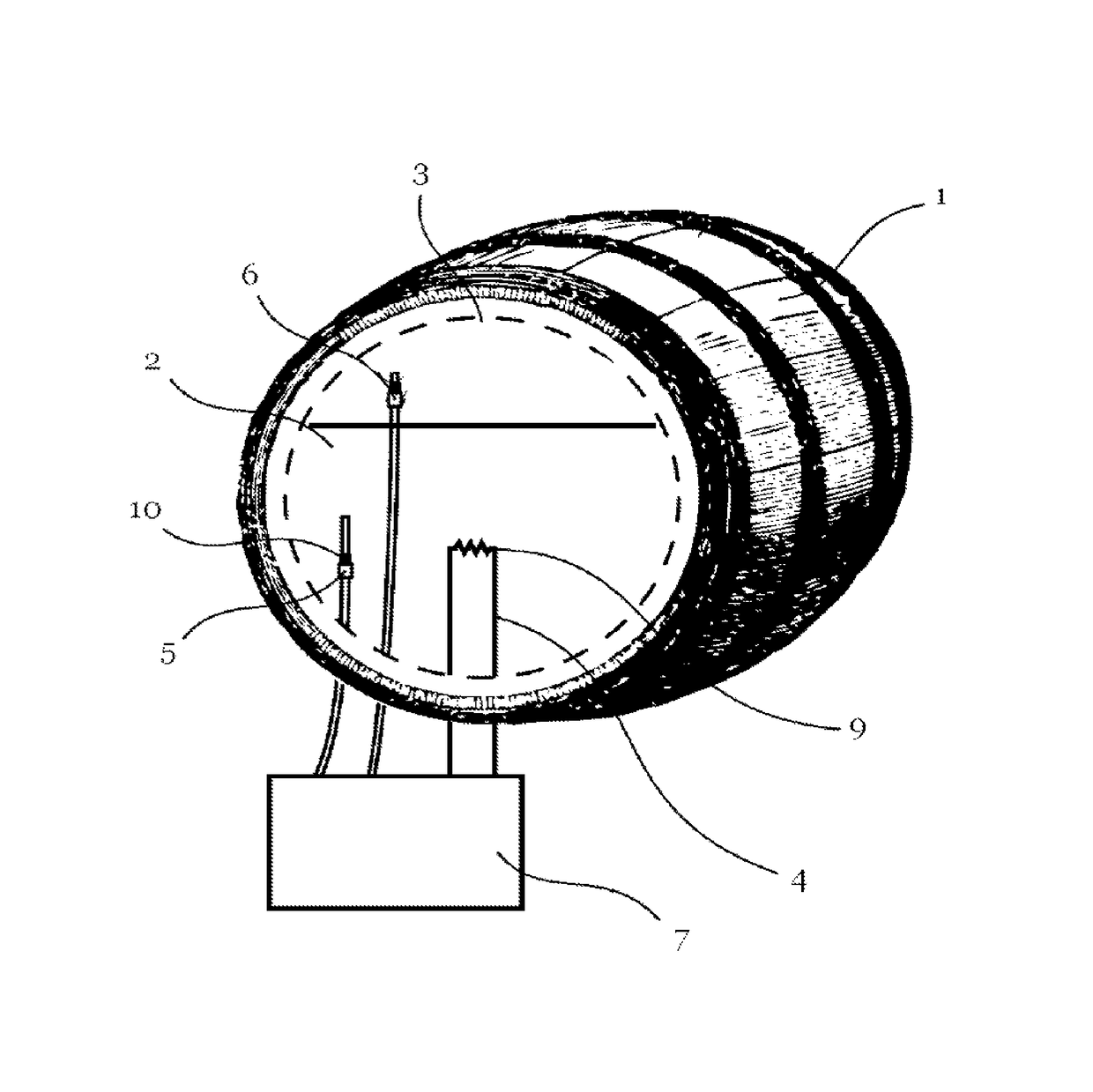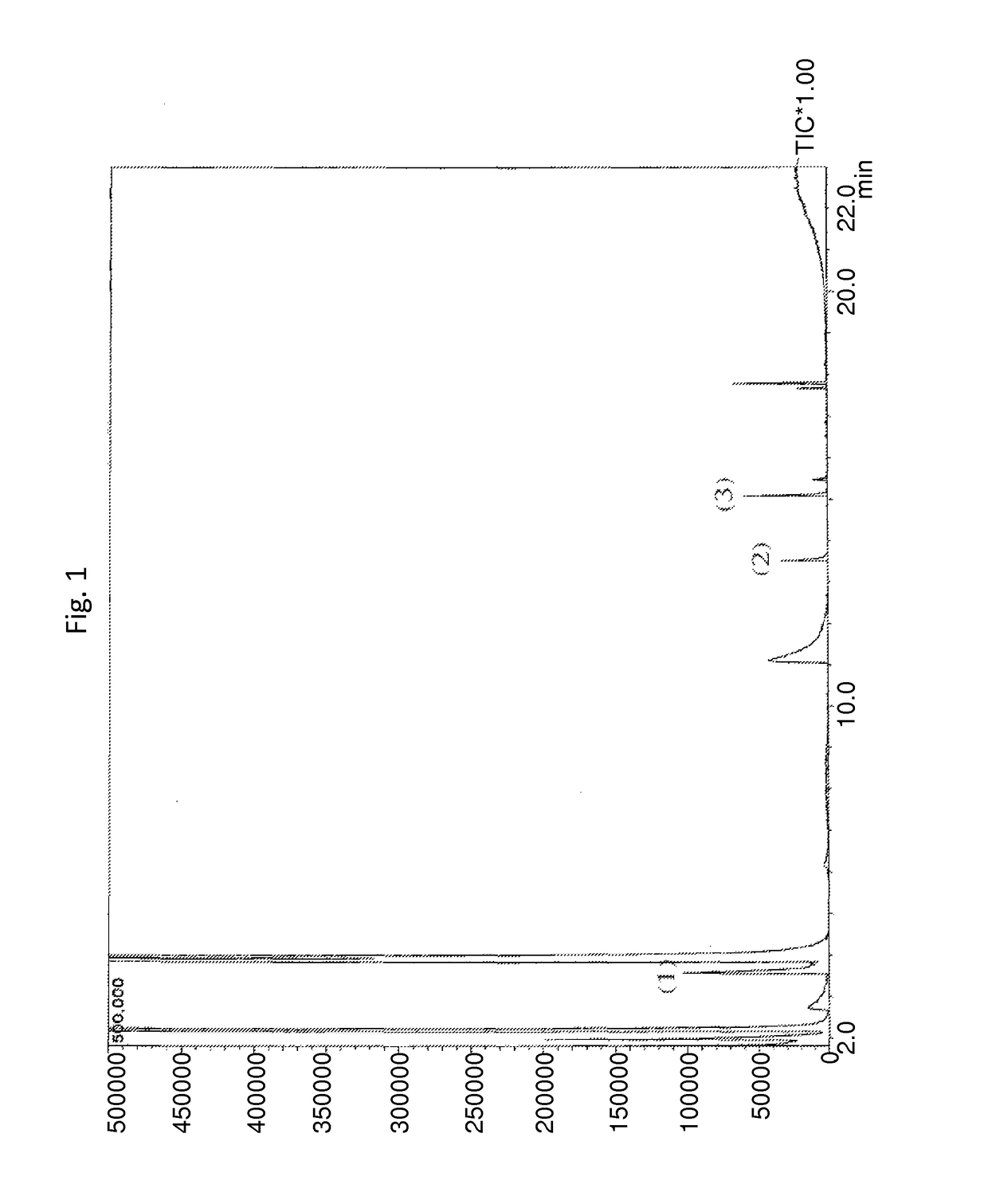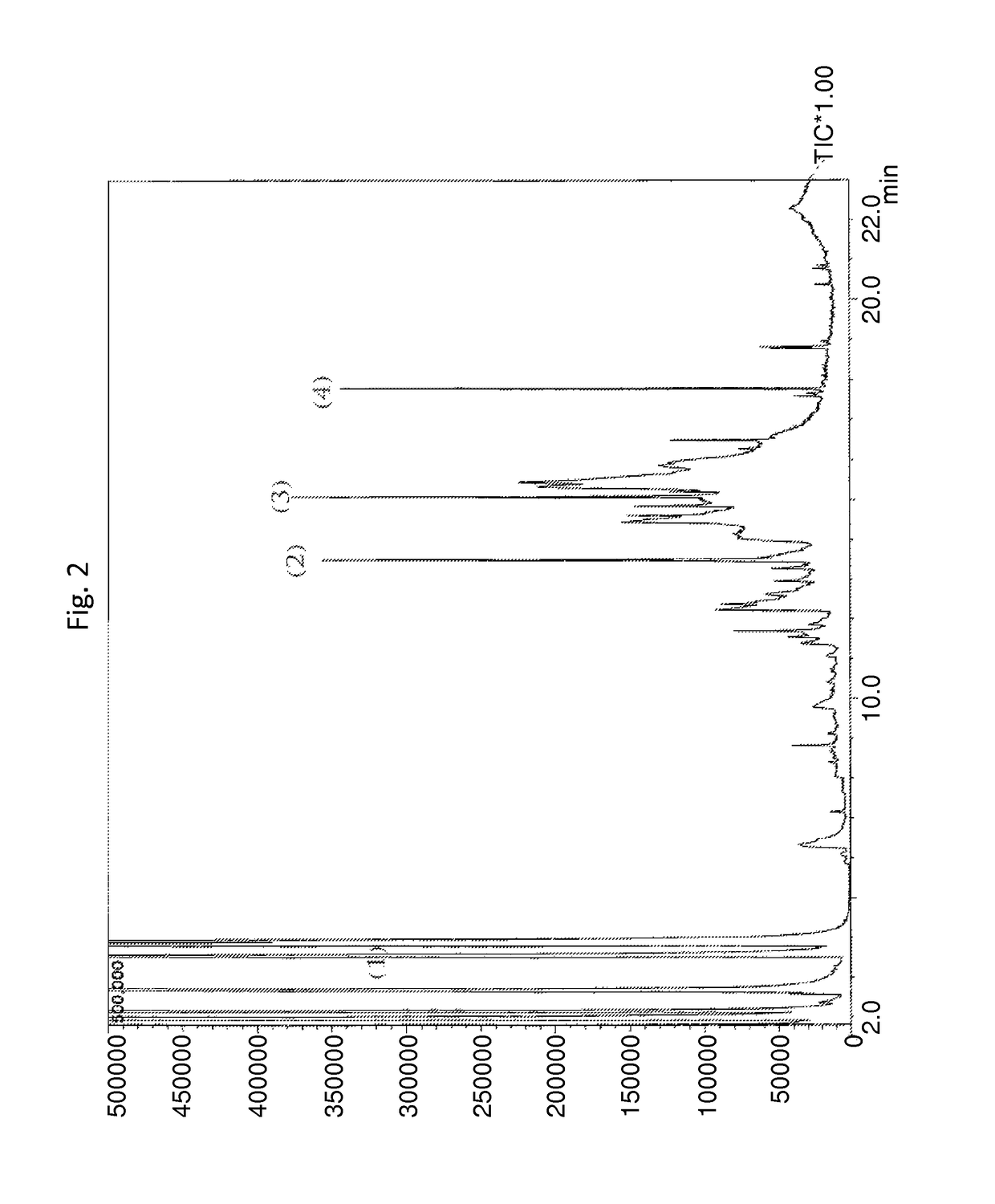Method for rapid maturation of distilled spirits using light and heat processes
a technology of distilled spirits and heat processes, applied in the field of food chemistry, can solve the problems of increasing the cost of esterification, and not fully understanding the myriad of chemical reactions responsible for the flavor of wood-aged spirits
- Summary
- Abstract
- Description
- Claims
- Application Information
AI Technical Summary
Benefits of technology
Problems solved by technology
Method used
Image
Examples
example 5
Mixed Batch Heat and Actinic Light Process
[0091]Otherwise unprocessed heavy pot distilled rum was added to a stainless steel tank and mixed with charred oak slabs and heated to between 150° F. and 170° F. Temperature was held in that range for 48 hours. Separately, an otherwise unprocessed heavy pot still rum was placed in a sealed flint glass jar along with charred oak slabs and placed in a greenhouse for 30 days. The product of the heat treatment and the product of the light treatment were then mixed together with a ratio of 60% of the heat process product and 40% of the actinic light processed rum. This mixture was allowed to react for 24-48 hours. After this time period, the resulting product was analyzed by GCMS. The GCMS chromatogram is shown in FIG. 5. The chromatogram shows some unexpected results along with major developments. The acetyl concentration (peak 1) unexpectedly fell to a concentration lower than that of either of its constituent parts (FIGS. 3 and 4). But, the a...
example 6
Sequential Temperature and Light Processing
[0093]An otherwise unprocessed heavy pot distilled rum was added to a stainless steel tank and mixed with charred oak slabs and heated to between 150° F. and 170° F. Temperature was held in that range for 48 hours. The resulting product was then placed in a sealed flint glass jar along with charred oak slabs and placed in front of a 500 W halogen bulb for 3 days. Seventy glass jars are placed on a shelf surrounded by a total of 20 lights. The lights were toggled on and off in 2-4 hour cycles to prevent boiling. The resulting product was then placed in a stainless steel tank and mixed with charred oak slabs and heated to between 150° F. and 170° F. Temperature was held in that range for 48 hours. The resulting product was analyzed with GCMS.
[0094]FIG. 6 shows the GCMS chromatogram from a rum sample that has been processed with both heat and light in accordance with Example 6. It shows some unexpected results along with major developments. Un...
PUM
| Property | Measurement | Unit |
|---|---|---|
| temperature | aaaaa | aaaaa |
| temperature | aaaaa | aaaaa |
| concentration | aaaaa | aaaaa |
Abstract
Description
Claims
Application Information
 Login to View More
Login to View More - R&D
- Intellectual Property
- Life Sciences
- Materials
- Tech Scout
- Unparalleled Data Quality
- Higher Quality Content
- 60% Fewer Hallucinations
Browse by: Latest US Patents, China's latest patents, Technical Efficacy Thesaurus, Application Domain, Technology Topic, Popular Technical Reports.
© 2025 PatSnap. All rights reserved.Legal|Privacy policy|Modern Slavery Act Transparency Statement|Sitemap|About US| Contact US: help@patsnap.com



